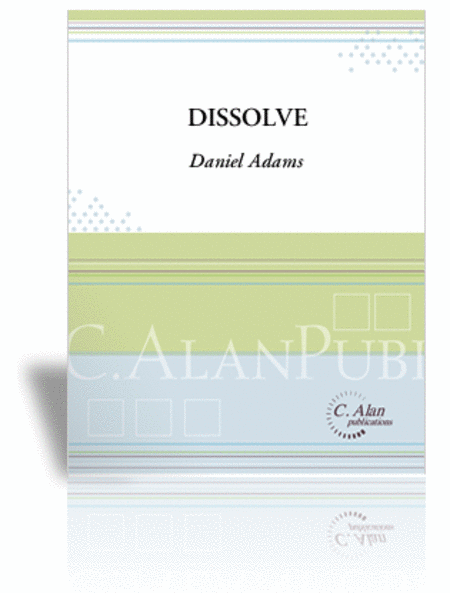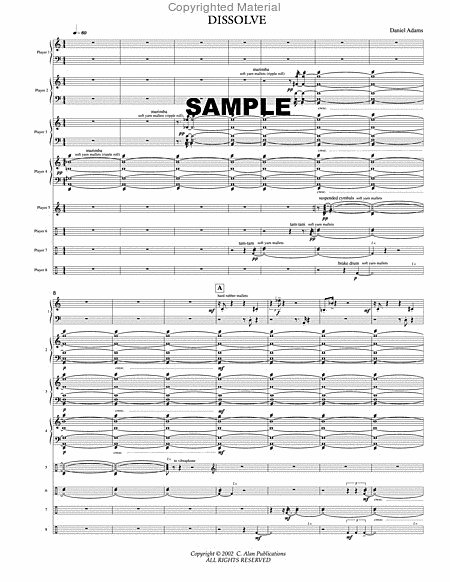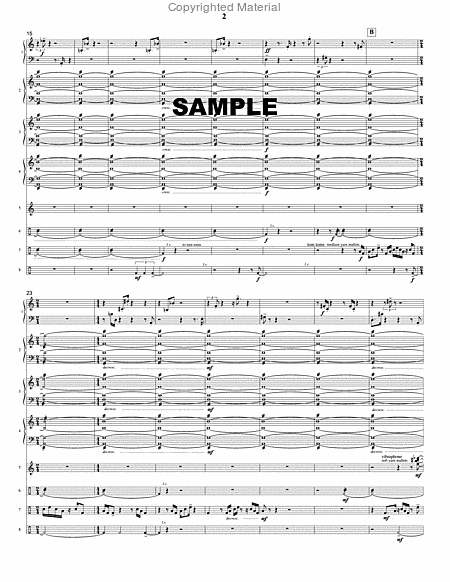Dissolve (score only)
-
Ships in 3 to 4 weeks
Details
Description
SKU: CN.05921
Composed by Dan Adams. Score only. Duration 6:00. Published by C. Alan Publications (CN.05921).Inspired by cinemagraphic techniques in which one image is gradually transformed into another, this work allows resonant sounds to dissolve according to their natural acoustical decay. Sustained sounds dissolve into percussive passages and definitely pitched sonorities dissolve into the sounds of indefinitely pitched instruments.
The title of "Dissolve" refers both to the literal definition of the term, a separation of an entity into its constituent parts, and to a cinemagraphic technique in which one image is gradually transformed into another. Resonant sounds dissolve according to their natural acoustical decay. Sustained sounds dissolve into percussive passages and definitely pitched sonorities dissolve into the sounds of indefinitely pitched instruments. Homophonic and polyphonic textures dissolve into one another. "Dissolve" is composed in a three section form that resembles ternary or rounded binary but is neither, as the three sections are distinguished mostly by timbre, texture, and the relationship between definite and indefinite pitch. The first section consists of mostly long sustained notes. The second, third, and fourth marimbas begin the piece entering one by one with rolls on the 12 notes of the chromatic scale spread throughout the marimba's register. The marimbas are accompanied by resonant sounds played on the indefinitely pitched metal instruments. The first marimba articulates the same notes that are played as rolls by the other three marimbas, facilitating the transition to middle section. Two alternating chords played on the vibraphone complete the transition to the more rhythmically active middle section, which is dominated by indefinitely pitched wood, metal, and membrane instruments. This section is characterized by a faster tempo and more complex rhythmic counterpoint. Indefinitely-pitched counterpoint between the tom-toms and temple blocks are juxtaposed against a collage of repeated notes on the cowbell, claves, and bass drum Playing a six note motive, the vibraphone part again signals a transition, this time to the final section. It is based on polyrhythmic counterpoint between the vibraphone, crotales, and bells with the marimba rolls from the opening section serving as a backdrop.



 Share
Share